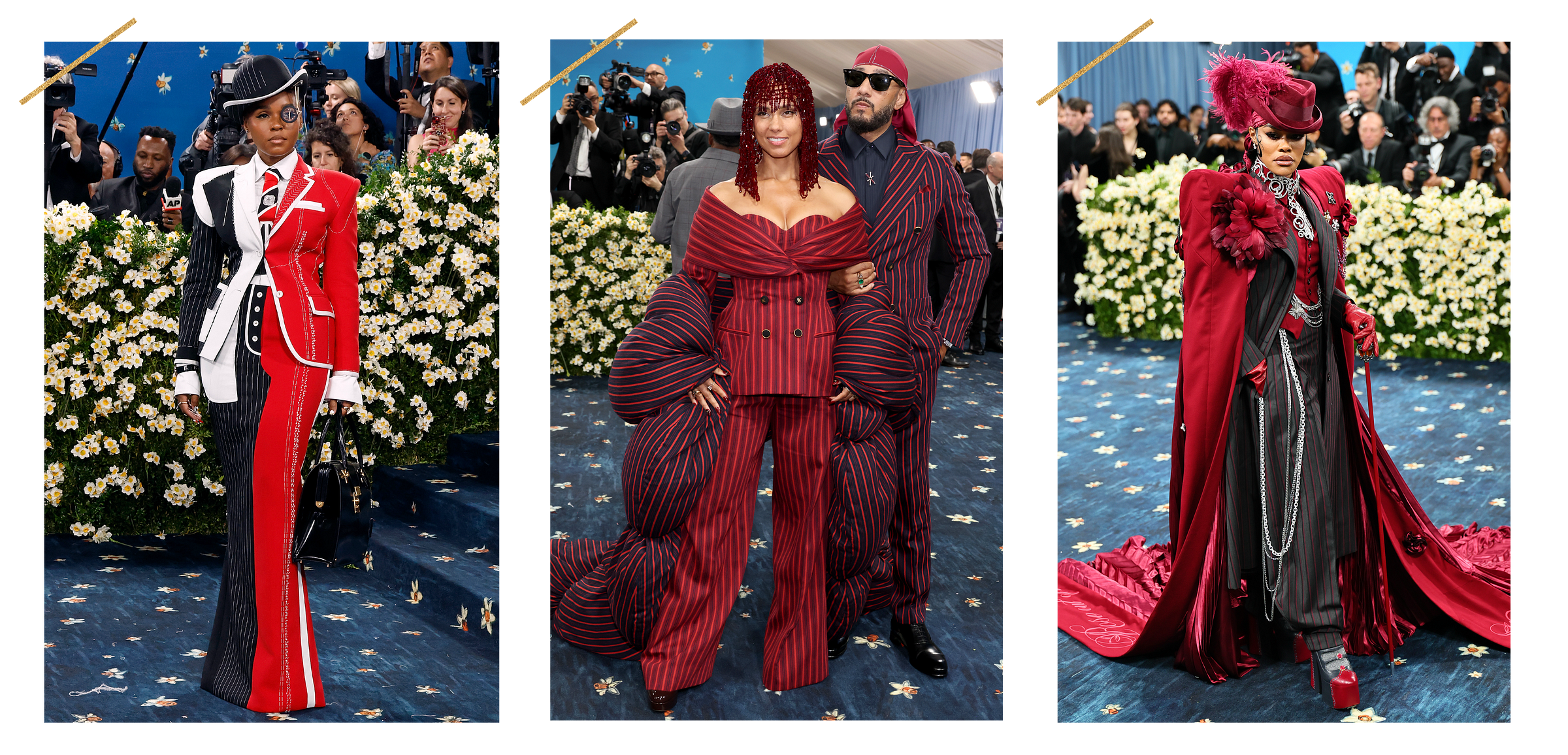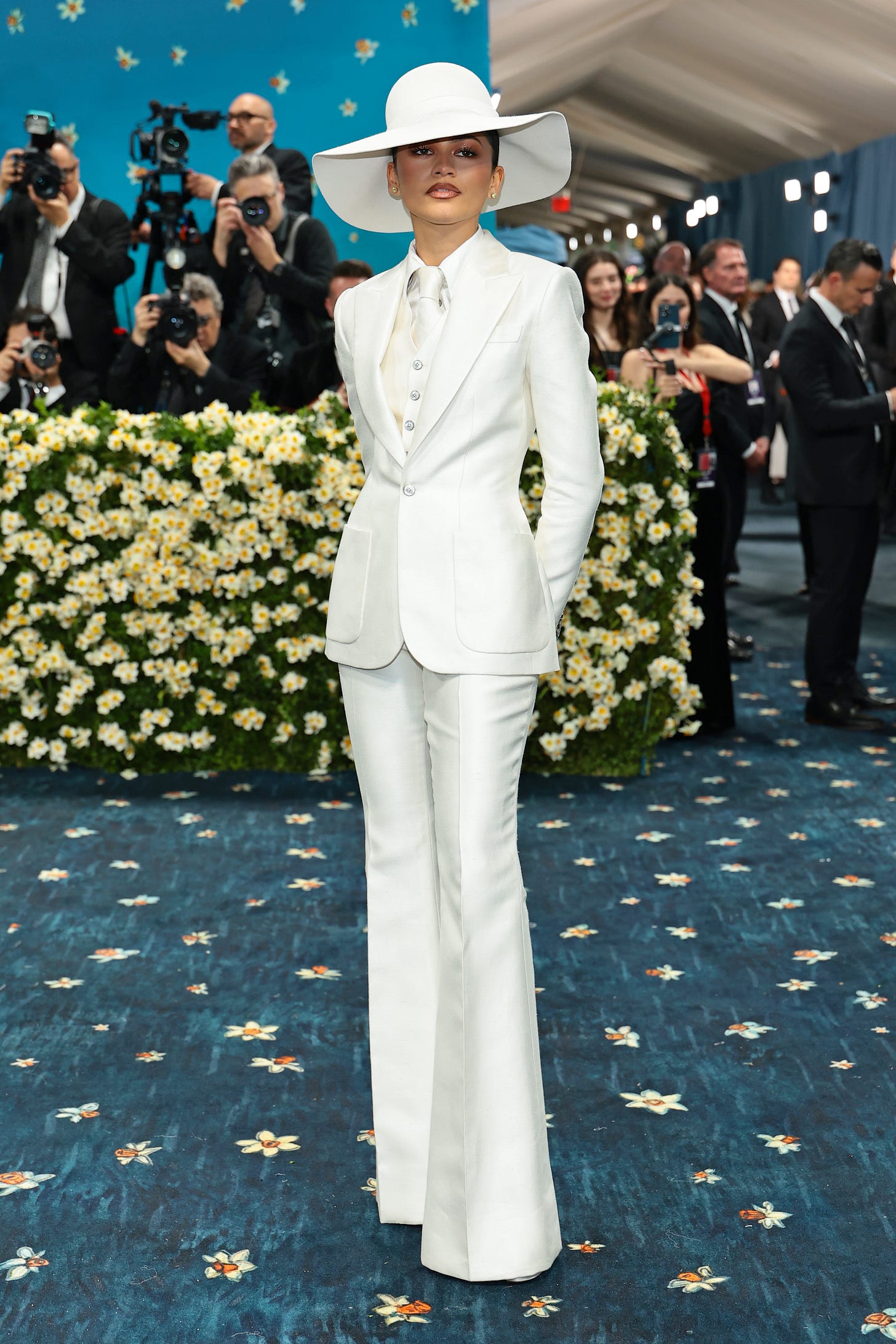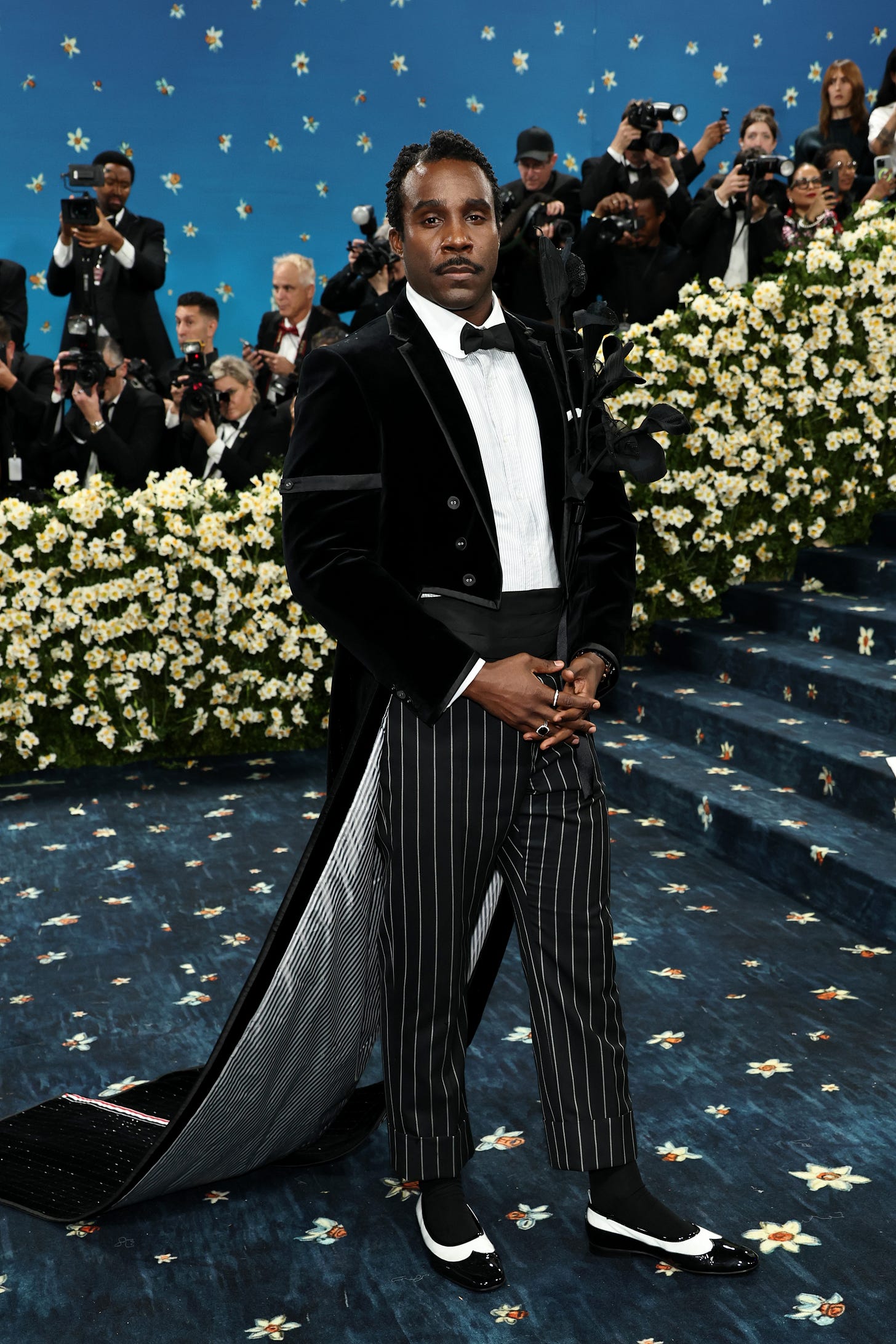The Met Gala is the annual apex of intentional fashion. Each year, attendees are given a dress code to interpret. This is the crux of the Met Gala and a huge part of what drives its continued fervor for both attendees and observers alike. The dress code introduces a “graded” element to the evening.
This signature measurable element of dress code adherence keeps intentionality top of mind and provides structure for all to be able to quantify who actually dressed up to code.
This year, the dress code was “Tailored For You” which the Met Museum described as “a nod to the exhibition’s focus on suiting and menswear.” Naturally, unique takes on suiting took center stage on the red blue floral carpet. Pinstripes, blazers, outrageous proportions, dramatic tails, and more followed suit (pun intended).

But it wasn’t the first part of this year’s dress code that captured my attention (though I’ve been known to proclaim my love for a tailored blazer). I was more intrigued by the latter portion — “for you.” This addendum sharpened the focus of the theme, distilling it to center the individual. Of course, tailoring is an inherently bespoke craft. Definitionally, it refers to clothes being “made, adapted, or suited for a particular person.” But this dress code is deeper than that. This isn’t just about wearing exquisitely made to measure garments. It’s about carefully choosing clothes that lay bare the wearer's unique story. Indeed, this year’s co-curator Monica Miller — who wrote the book, Slaves to Fashion: Black Dandyism and the Styling of Black Diasporic Identity, that inspired this year’s exhibit — made it known that this year, the dress code was personal. Particularly to the Black community as the exhibit, “Superfine: Tailoring Black Style”, paid an overdue homage to those who have long used fashion as resistance, as revolution, and as reclamation of culture and identity. Costumer Ruth E. Carter reflected to Vogue, “As we embarked on our journey in this country, we were stripped of everything. A lot of times the only thing you had was to show it on your body.”

I appreciated those who took the time to weave personal sentiment into their looks. Whether that was Bad Bunny’s donning of the Puerto Rican “pava” hat. Or Ayo Edebiri’s tribute to her Nigerian father through the use of coral beads - a signature component to their traditional garb. “I am particularly proud of the way we played with silhouette and proportion to create a look that is both classic and contemporary … that reflects the spirit of Black dandyism and Ayo’s family’s deep roots to Nigeria and the Caribbean,” said her stylist Danielle Goldberg to Vogue. Some took inspiration one step further, like Ava DuVernay’s custom Prada spin on her own great-grandmother’s ensemble from 1919.
In a statement ahead of the exhibit, Miller wrote, “Fashion and dress have been used in a contest of power and aesthetics for Black people from the time of enslavement to the present, and dandyism has long served as a vehicle through which one can manipulate the relationship between clothing, identity, and power.” She added, “[Dandyism is a] strategy and a tool to rethink identity … to really push a boundary on who and what counts as human.”

A huge part of my work with TSS lies in not only reporting on Taylor’s fashion exacts, but contextualizing them within the “lore” of her world with thoughtful commentary that analyzes her aesthetic choices. Much like her music, Taylor’s fashion becomes a richer text when you know the story behind the art. Fashion is that powerful. I was so heartened by the words of Dapper Dan, the fashion pioneer famed for his reuse of luxury logos, when he echoed this sentiment while describing his Met Gala look: “I consider music and fashion opposite sides of the same coin … Dressing is always intentional, no one gets dress [sic] by accident.” To Vogue he added, “Most people, when they get dressed, even if it’s subtle, make a statement. Black dandyism, though, isn’t that. It’s narrative.” Yes!
“I consider music and fashion opposite sides of the same coin
… always intentional.” - Dapper Dan
It stood to reason for me that this Met Gala, in particular, was one where the context and culture of Black creatives were centered and celebrated. With that in mind, I thought it was vital to tap a voice who could speak passionately and personally to this year’s Met Gala attendees and their clothes.
The following is a guest essay by Robyn Mowatt, senior fashion editor at Essence. She hand selected her favourite looks from Monday’s Met Gala and thoughtfully broke down their backstories and context.
📧 Email: This is going to get cut off in your inbox. Best to view it in app or in browser.
📝 Guest Contributors: I’d like to thank Robyn for her time in providing her thoughtful fashion coverage and to you for your support of Liner Notes which makes it possible for me to pay contributors like her. Would you consider upgrading to a paid subscription or gifting a month today?
💟 Engagement Matters: If you’re not currently in a position to become a paid subscriber, please consider becoming a free subscriber + hitting the ‘🤍’ heart button + commenting on this post. Any/all engagement helps creators tremendously!
🏈 Fashion’s A Game, Wanna Play?: Catch Robyn’s previous guest essay diving into the history of tunnel fashion.
🏛️ Met Gala Primer: Not sure what the difference between a theme and a dress code is? ICYMI, I wrote a primer on this year’s Met Gala.
By Robyn Mowatt
Dapper Dan in Dapper Dan
Harlem-based fashion connoisseur Dapper Dan is perhaps one of my favorite legends in the industry. For his modern take on Black Dandyism, he opted for a custom black and white Zoot suit embellished with sequins and lace throughout. This nod to Black men in Harlem of the past was executed in a manner that was brilliantly well-received by a slew of publications including Vogue, Teen Vogue, and more. Most notably, the detailing throughout his look featured a Sankofa symbol. This symbol urges many of us, especially Black Americans to look back at the past in order to inform the present.
Zendaya in Louis Vuitton
Ahead of Zendaya hitting the Met Gala’s blue carpet, I knew we were in for a treat. Aligned with the “Superfine: Tailoring Black Style” theme she attended the affair in a perfect suit by Louis Vuitton. Styled by the beloved image architect Law Roach, the white two-piece provided a chance for many of us to reflect on the transformative power that lies in clothing. This nailed the theme for me due to how intricate the stitching was–additionally, the hat was the perfect touch. Most notably, Zendaya’s energy that she includes in each of her red carpet moments is admirable.
Tramell Tillman in Thom Browne
Immediately upon seeing Tramell Tillman’s ensemble for this year’s Met Gala by Thom Browne, I was blown away. According to Thom Browne’s Instagram account it took 300 hours of handwork to craft his ensemble which consisted of an elongated tailcoat in black velvet, a white oxford shirt, and a matching bow tie. Opera ballerina spectators were a tremendous touch as well. Calla lilies, Tramell’s favorite flowers were incorporated into the fashion moment. This was a 10/10 to me. Tillman’s outfit was styled by Chaise Dennis a stylist who has been on my radar ever since I saw a few slick looks by him for the actor’s press run for the hit show Severance.
Jonquel Q Jones in Sergio Hudson
Sergio Hudson is a designer who has been unafraid to create modern suiting for his customers for years–for many of his recent collections he regularly designs suits that evoke professionalism in a fun and energetic way. Hudson’s take on Black Dandyism for Jonquel Q Jones of the New York Liberty was a favorite of mine. With her locs expertly styled upwards, Jones wore a snake skin-inspired blazer by Hudson paired with flared trousers. The patent leather footwear choice alludes to how shades of black can be paired together elegantly. Courtney D. Mays, a stylist I highly respect, especially in the WNBA style market was responsible for this iconic style moment.
Janelle Monáe in Thom Browne
Janelle Monáe is a style chameleon that I enjoy seeing shine on red carpets. For their fantastical moment at the Met Gala, they enlisted Oscar Award-winning costume designer Paul Tazewell of Wicked. Tazewell worked with Thom Browne on a tribute to the Met Gala’s theme that felt larger-than-life. The custom look featured a deconstructed then reconstructed take on a tuxedo. The trompe l’oeil suit cape, an overcoat, a monocle, a sportcoat, and a corset in addition to a tie were a part of the ensemble. With each of these items fused together, Tazewell presented how skilled he is at creating looks that will stand the test of time.
My sincere thanks to Robyn for her words, time, and expertise.
Robyn Mowatt is a senior editor and writer. Her work covers the intricacies of Black culture, designers of color, music, and entertainment. Mowatt has written for Elle, Harper’s Bazaar, Rolling Stone, Vogue, NPR, The Cut, Nylon, Byrdie, Essence, and various other web publications. She is the former associate editor at Hypebae where she developed the site's culture content and focused on emerging designers, music, and Black Hollywood. Mowatt also was previously a staff writer and contributing editor at Okayplayer where she carved out a lane for herself by writing sharp editorial packages, profiles, and features. At the music-centric platform, she breathed life into their coverage of R&B, fashion, entertainment, and women in hip-hop.
















